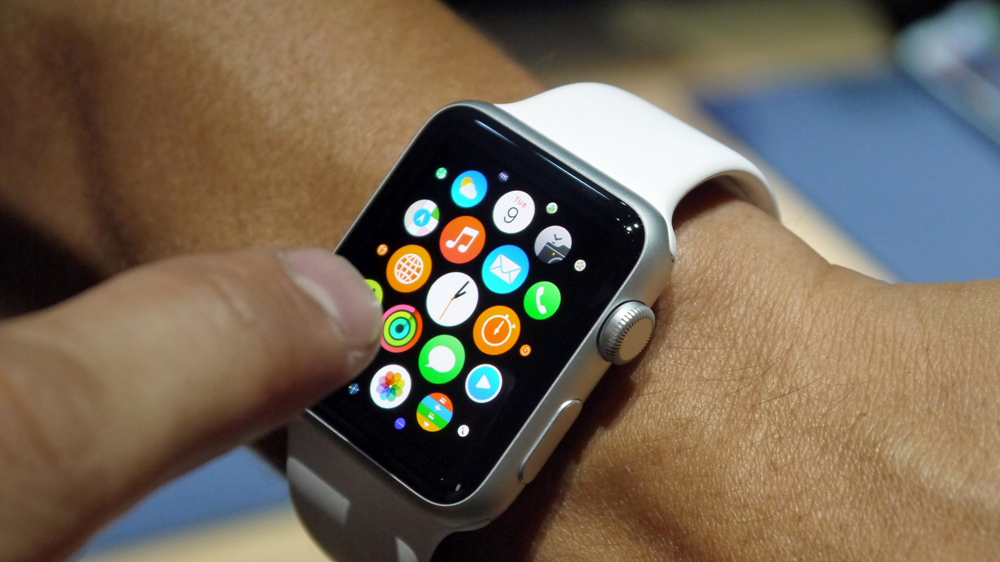The Apple Watch's biggest problem is that it does too much
We need a smartwatch that separates the signal from the noise

Apple has fought and won many wars in consumer technology with simplicity. The company's 'It Just Works' slogan was weaponised long ago in the fight against the onslaughts of preferences and customisation wielded by Google and Microsoft. And guess what - that strategy just worked.
But there's no simplicity in the company's first steps into wearable technology. The Apple Watch seems to do absolutely everything. You can pay with it! It controls Apple TV! It's a walkie talkie! It's a viewfinder for your phone's camera! It tracks your movement, exercise levels and time spent standing! You get achievements for your activity! You can use it to unlock your hotel room! You can see and reply to messages, email and phone calls! You can send people little drawings!
And that's not all.
You can send customized taps! You can record and send your heartbeat! You can see where you are, and get turn-by-turn directions! You can store and access boarding passes, tickets, and loyalty cards! You can track the price of stocks! You can access photos! You can talk to Siri! There are three different models! Each model can be customised with different straps! It even tells the time - with your choice of millions of watch faces.
Some of you will have read all of that and are shouting 'brilliant!'. But far more of you will have skimmed over the last two paragraphs to try and find out what my point is. My point is that this is too much to have on your wrist.
Infotoxicity
Psychologists have talked for decades about 'information overload' - when the amount of stuff that humans are exposed to exceeds their capability to process it all. Alvin Toffler coined the term in his 1970 book Future Shock, and his predictions have proved remarkably prescient over time - today we live in a world awash with notifications, texts, emails, breaking news, friends requests and more, and that list grows with each passing year.
This isn't a call for a return to the dark ages. But we need better ways to process our information. Machines aren't good at it yet - we've seen that in Facebook's repeated News Feed blunders, as well as the recent uproar over Twitter's move to a curated timeline. Beats Music CEO Ian Rogers told a panel at SxSW 2014: "I haven't seen anything yet to replicate that human experience."
Sign up for breaking news, reviews, opinion, top tech deals, and more.
Apple has built its success over the years on that human experience, making its products simple and easy to understand. That's how it's been able to take them mass-market, despite a premium price tag.
That's why your parents feel more comfortable buying Apple products. That's why, in the days preceding the announcement, Apple bloggers went to great pains to set expectations - John Gruber at Daring Fireball predicted it would "have far, far fewer features than do Android Wear devices" and "appear under-powered at first".
Arms race
But that isn't what Apple delivered on 9 September 2014. The company delivered a watch with multiple screen sizes and a homescreen that's a confusing jumble of tiny icons. A watch with an emphasis on customisation, and a features list that's firmly on par with Android Wear - delivering endless notifications that cause it to perpetually vibrate. In short, Apple seems to have opted for an arms race (a wrist race?) with Google.
It could have been so different. The constraints of a watch's small form factor - tiny batteries, a small screen size and necessary ruggedness - are a golden opportunity to design technology that helps us slow down, allowing reflection rather than pushing efficiency.
I want a smartwatch that's simple, elegant, and beautiful. A smartwatch that separates the signal from the noise - giving me just the information I need, and withholding everything else. A smartwatch that knows when I'm busy, and gets out of the way. A smartwatch that uses its intimate knowledge of my biology to personalise my experience, not merely chart it.
For all Apple's talk of reimagining what a watch can be, the only thing the company's delivered is another padlock on its walled garden.
- iPhone 6: the hands on verdict
